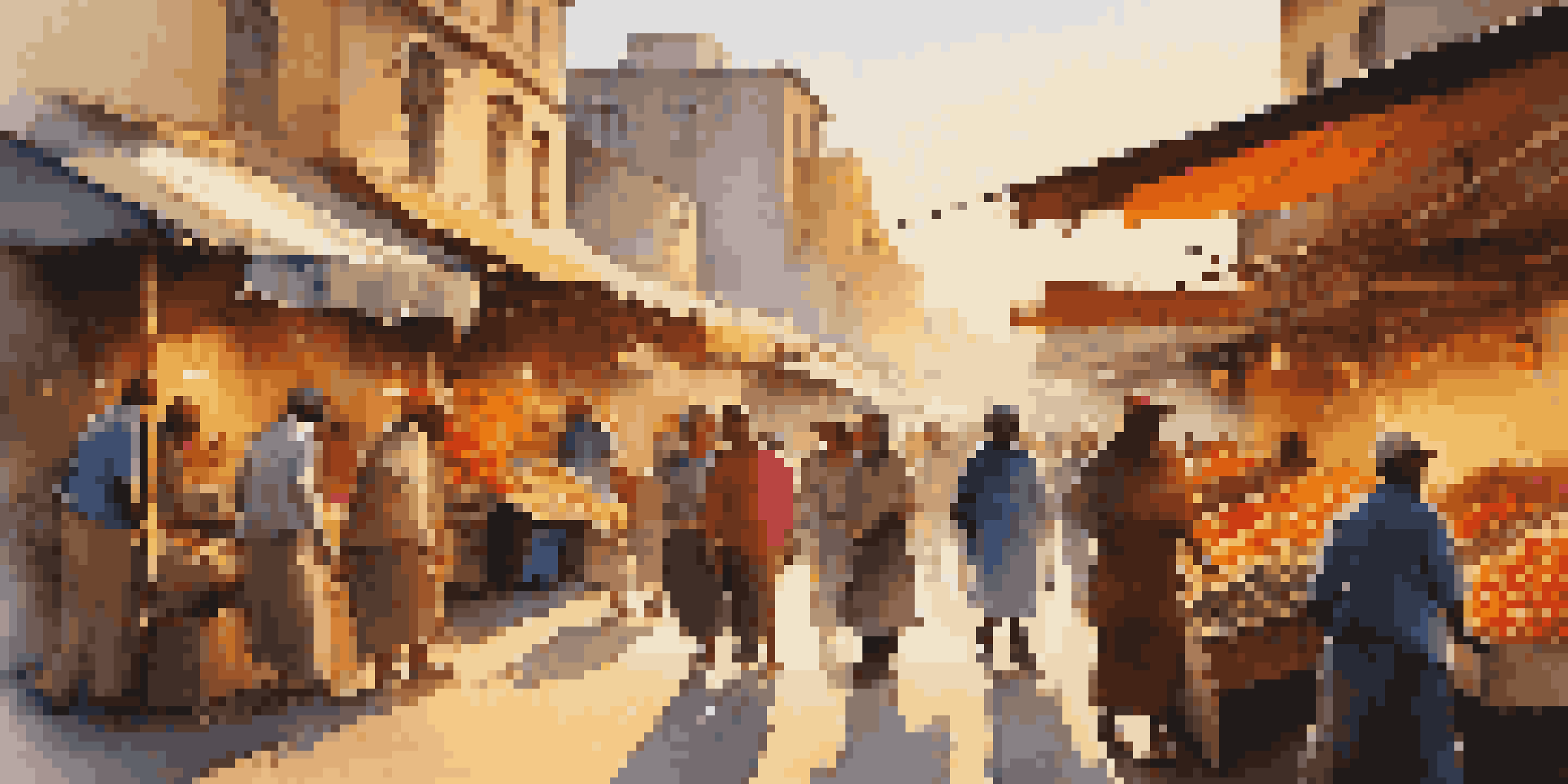How to Capture Movement in Travel Photography

Understanding Movement in Travel Photography
Movement can add life and energy to your travel photos, transforming a still image into a dynamic story. Whether it's a bustling market scene or waves crashing on a shore, capturing movement helps convey the essence of a place. This element of photography invites viewers to feel as if they are part of the moment, experiencing the world alongside you.
Choosing the Right Camera Settings
Selecting the right camera settings is crucial when aiming to capture movement. A slower shutter speed can create a beautiful blur effect, conveying motion, while a faster shutter speed freezes action, allowing you to capture crisp details. Experimenting with settings like ISO, aperture, and shutter speed will help you find the perfect balance for your desired effect.
Capture Movement for Dynamic Photos
Incorporating movement in travel photography brings images to life, allowing viewers to feel the energy of the moment.
Utilizing Panning Techniques
Panning is an effective technique that involves moving the camera along with the subject in motion. This method allows you to achieve a sharp focus on the moving subject while blurring the background, emphasizing speed. Practice this technique in various scenarios, such as cyclists racing past or children playing, to see how it transforms your images.
Incorporating Motion Blur for Dramatic Effect
Motion blur can add a dramatic flair to your travel photography, especially in vibrant settings. To achieve this effect, use a slower shutter speed and intentionally move your camera in the direction of the motion. The result is a captivating image that conveys the energy and hustle of your surroundings.
Master Camera Settings for Action
Choosing the right camera settings, such as shutter speed, is essential for effectively capturing motion in your images.
Capturing Action in Sports and Events
Sports and events are excellent opportunities to capture movement and action. Anticipating key moments, like a runner crossing the finish line or a dancer mid-performance, can lead to stunning images. Be patient and ready, as these spontaneous moments often yield the most impactful photographs.
Using Natural Elements to Enhance Movement
Incorporating natural elements like wind or water can enhance the sense of movement in your photos. For instance, capturing a flowing river or leaves rustling in the breeze adds a layer of dynamism to your composition. Pay attention to how these elements interact with your subjects, creating a more immersive experience for viewers.
Enhance Photos with Creative Techniques
Utilizing techniques like panning and experimenting with angles can dramatically alter the perception of movement in your photography.
Experimenting with Different Angles and Perspectives
Exploring various angles and perspectives can dramatically change how movement is perceived in your travel photography. Try shooting from low angles to emphasize speed or from above to capture the flow of a crowd. This experimentation not only helps you find your unique style but can also tell different stories through movement.
Post-Processing Techniques to Enhance Movement
Post-processing is a valuable tool for enhancing the sense of movement in your images. Using software like Lightroom or Photoshop, you can accentuate motion blur or add effects that emphasize action. However, always strive for a natural look to maintain the integrity of your original capture.